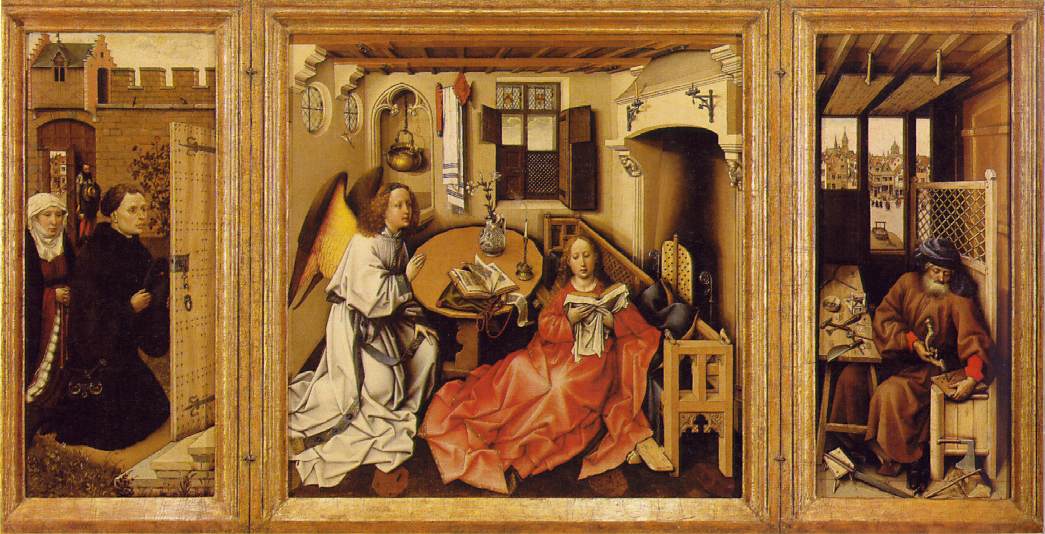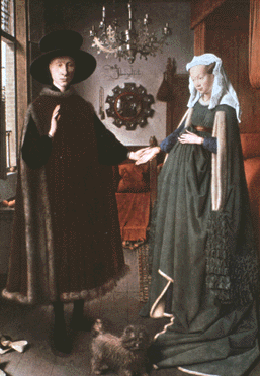

 |  |
| Robert Campin, the Merode Altarpiece, c. 1425 | Jan Van Eyck, |
| Arnolfini Newlyweds, | |
| or Wedding Portrait, 1434 |
Another contributing factor to the development of perspective was the new interest in mirrors.
The flat lead-backed mirror was introduced in the thirteenth century, and apparently fascinated artists and writers as much as it did those interested in optics!
Mirrors were a standard piece of furniture in the studios of late medieval painters, although these may have been the easier-to-make convex mirrors, shown above in the famous painting of the Arnolfini newlyweds of Jan Van Eyck:
This increased use of mirrors by artists generated interest in geometrical optics and provided a way to see a real scene on a flat plane. The convergence of parallel lines to a vanishing point when seen in a real scene is easily ignored because it is so familiar. But when seen on the unfamiliar flat surface of a mirror is less likely to go unnoticed. This may have caused artists to look for the same phenomenon in the real world.